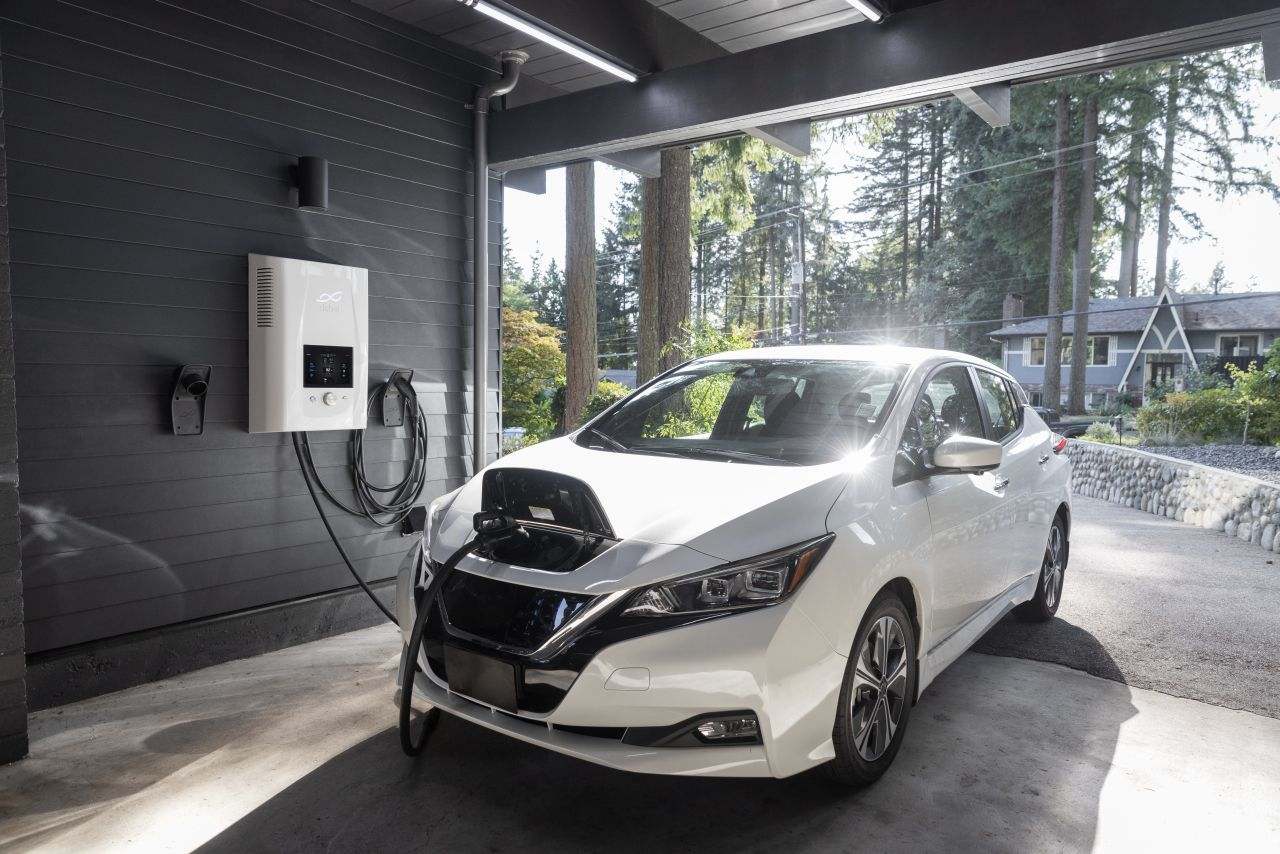If you are shopping for a house, you may wonder why some houses have the garage floor on a lower level than the house floor. More houses are straying away from this once required building code, but there are still many on the market that may leave you scratching your head.
Garage floors are lower than the house for several reasons, such as:
- Concern about water intrusion from the garage to the house
- Fuel or hazardous liquids or vapour leaking into the house
- Old building codes mandated it
Though many don’t stress over the garage floor level, it is still a concern for some. You may live somewhere that gets plenty of floods throughout the year, or you may be in a position where fuel leakage is an issue you deal with. Regardless of what your issue may be, read below to get an explanation of all of it!
If you look at garages around your neighbourhood, you will notice that many of them have a floor level slightly below the rest of the house. Many homeowners like me just got used to it but have no idea why that is.
This is the first time we have had a house with an attached garage, and we wondered why the garage is lower than the house. We asked around my neighbourhood, and no one seemed to know why. We researched the topic and were surprised that even some inspectors and contractors don’t have a clear answer.
In the past, cars were not as safe as they are today. Gasoline and oil leaks, together with gas build-up, were more common, and lowered garages prevented hazardous material from getting into the house. Although the new building code no longer requires it, some jurisdictions still enforce it.
FAQs About Garage Renovation
How Much Does It Cost to Replace a Garage Floor by Square Footage? On average, replacing a garage floor is around $7 per square foot.
Smooth it out the best with a putty knife or margin trowel. Within 24 hours, the repair will be hard enough to grind or sand flush. For larger areas of pitting and spalling, we recommend using a 100% epoxy concrete patch with a sand aggregate. The silica sand is mixed with the epoxy to act as a filler.
On average, your garage floor should last around 20-25 years. If it’s older than that, it’s probably time for an update.
You can put new concrete over old concrete. However, unresolved issues with your old concrete, such as cracks or frost heaves, will carry over to your new concrete if not taken care of. In addition, you must pour it at least 2 inches thick.
Some of the most common reasons for cracks in garage floors are settlement, shrinking, improper installation, and poor drainage. In some cases, cracks are nothing to worry about. After all, one thing is certain when working with concrete. It is destined to crack at some point.
This Is Why Garage Floors Are Lower Than The House
The main reason some houses are built on a different level than the garage is to protect the house from anything that could enter through the garage. You’d be surprised at the dangers of entering the house through the garage in the rain, lawnmowers, and other machines.
Everyone’s experience is different, so one house may have been built this way for one reason, but another house may have been built this way for a completely different reason. It all depends on the location, who owns the house, and who built it.
For example, if someone who is handicapped lives or visits a certain house often, some may want the garage to enter directly into the house without any elevation change.
But, usually, the main house’s floor elevation makes people feel more comfortable. They don’t have to worry when their location is put under a flood warning, and they aren’t home to put down any reinforcements to keep the water from entering. Instead, it’s just the garage that may get wet, and the rest of the house is safe.
Water Intrusion
If you live in an area where floods are common, you’ve probably already thought of water intrusion. If a flood gets severe enough, your garage could become a beacon for high water levels. There are solutions besides the garage floor being on a lower level, but it certainly isn’t a bad solution to a potentially serious situation.
To keep floods away, the separation between the house and garage level must be deep enough to keep from the water entering the house. No one would want to come home from a long day of work to see 6 inches of rain invading their own home from the garage.
With at least 4 inches between the garage and house floor, you are more likely to come home with a dry floor. However, rain from hurricanes or other severe storms may still prevail in getting water into the house. However, as mentioned earlier, there are other ways you can prevent water intrusion.
Sloped Garage Floor
Many houses pair this with the house floor elevation to further waterproof the house floor. The idea is that a floor sloped towards the garage door would allow the water to stay out of the garage. Even if it does manage to get high enough to rise the slope, it certainly won’t in a way that should be a concern.
Besides being one of many ways to keep water out of the house, it also allows households with disabled members to feel included while the house is being built. Since a sloped floor can be done without the need for steps into the house, this eases the mind of anyone who helps transport the disabled members in and out of the house.
Most building codes now require a sloped garage floor rather than the elevation to assist people with handicaps. However, there are still many houses being built that are built with the floor elevation.
Drains
The other option to avoid any water entering the house is the same way we avoid any water leaving the shower and ruining the bathroom floors– water drains. By using water drains, you control the flow of water in your garage to avoid any damage or water intrusion.
The two drain options are trench and square or round. While trench drains allow maximum water flow control, square or round drains are cheaper and easier to install.
Trench drains come in sections. You can either use one section, or you can use multiple sections for maximum protection. According to Everything About Concrete, it is recommended to make trench concrete out of polymer concrete with a galvanised grate on top. It’s also easier to install trench drains with the pitch already built into the drain, which Everything About Concrete also talks about.
Square or round drains are the easier options for your wallet and whoever is installing them. They are also recommended to be installed in the middle of the garage floor.
Fuel Leaks
If you’ve walked into your garage to see that your car has leaked fuel onto the garage floor, you’re probably far too familiar with the fear of the fuel affecting the inside of your house in any way.
Fuel leaks can be very serious in the grand scheme of things, and you should always be very careful with any fuel or gas that could potentially be hazardous. This is another reason why garages are lower than the rest of the house.
There are more scenarios to keep in mind. Though storing a lawnmower in a garage is not recommended, if you happen to store it in your garage, it could leak fuel. Some store fuel or any other hazardous liquid in their garage. If you store fuel in your garage, be sure that it is stored away from the door going into your house for further protection.
Burning fuel can also release fumes of carbon monoxide or gasoline vapours into the air, which can be very dangerous if brought into the house. This can be a serious issue in some cases, and even though elevating the house floor isn’t all you should do to prevent this, it can help. It would help if you also considered sealing your door and keeping it as shut as possible.
Reasons Why Most Garages Are Still Lower Than The House
According to the International Residential Code (IRC), the garage does not have to be lower than the house, but it has to have a slope leading towards the vehicle entry doorway.
If this is the case, why are most garages still built lower than the house? There are two main reasons:
- Local Jurisdictions: Although the IRC is in use or adopted by all States except Wisconsin, some jurisdictions amend the code to reflect local practices and laws. As a result, your house may be in a jurisdiction requiring the garage to be lower than the house. In other words, they may have adopted the IRC but amended that section of the code.
- Overall Misinformation: Some builders and even inspectors are “old school.” They may be enforcing that the garage is lower than the house because it was required in the past. It may not be a requirement anymore in your jurisdiction, but they don’t know it or think it should be a requirement.
Our house is part of an HOA, and we didn’t have a choice with my garage, even though, just like the IRC, my County in Delaware (Sussex) does not require the garage to be lower than the house.
So, you may choose depending on the location of your house and how convincing your arguments are with builders and inspectors. Let’s go over the advantages and disadvantages of having a garage lower than a house.
Advantages Of Having A Garage Lower Than A House
Both lowered and same level garage floors have certain advantages and disadvantages. These are the pros of having a garage lower than a house.
Safety
Some people are still concerned about safety in their garage and would like to have a 4-inch separation if there is a leak. Not everyone is an owner of a new and safe car.
Also, many homeowners enjoy doing all kinds of DIY projects and use their garages as workshops. If you are one of them, there is a chance that some leak will occur, and it would be good to have a lower garage.
Extra Height
Having your garage floor lower will add a few inches of vertical space. Many homeowners use their garages as storage spaces and install tall shelves on the walls. Having a bit more room for storage is always useful. You can use these top shelves to store items you don’t use often.
Disadvantages Of Having A Garage Lower Than The House
There is one main disadvantage to having a garage floor lower than the house that may be important to you.
Harder Access for Those With Impaired Mobility
Unfortunately, some people suffer from impaired mobility. Even healthy older adults may have difficulties using a step, especially carrying groceries.
If you have a lowered garage floor, you will have to go up and down these steps daily. It can also be a problem for mothers with small children carrying strollers and other items.
Instead of steps, you can install a ramp for tenants using a wheelchair, but the ramp will occupy significant space in the garage. That can be a problem if a garage is small.
Tips For A Better Concrete Garage Floor Slab
Whether you are just thinking about a new concrete garage floor or ready to start planning a new one, you probably have many questions. Sure, you might be satisfied to call a concrete contractor and let him tell you what you need. Call several contractors, however, and you are likely to get several different ideas about what you need with just as many different estimates for what it will cost you.
Do Your Research
That's when it pays to do a little research. It always makes sense to understand as much as you can about a home remodelling project, whether you plan to do it yourself or pay someone else to do the work. When searching for contractors, you need to be able to ask good questions and recognise when the answers you're receiving don't add up.
Lousy concrete slabs are all too common. Slabs that develop cracks are probably the biggest headache, and the folks who pour such slabs are prone to say things like, "concrete is always going to crack." Please don't believe it.
Good concrete slabs in garages will hold up to the weight they need to bear through hot and cold weather and for many long years with little if any cracks. People have garage slabs like that, as some that were poured more than 50 years ago are still as solid today as they were at the advent of the television age.
If you haven't been quite as lucky, it's important to note that both small and large cracks in concrete can be repaired. But if you want to know what differentiates good from not-so-good concrete slabs, here are some things you need to know.
Floor Level
Old habits die hard. Building codes are used to stipulate that the floor of an attached garage be four inches lower than the floor level of the house. The rationale for requiring this little step was to prevent spilled gasoline, gasoline vapours, and carbon monoxide from getting inside the house.
Today's residential building code does not include this requirement (presumably, cars are less likely to leak these days), which means that an entire house (garage included) can be set on a concrete slab poured at one height.
But there are still a lot of contractors and building inspectors who are stuck in the past, suggesting or insisting on a four-inch step, which costs more than a level slab.
If you run into one of these folks, feel free to question their wisdom and request that they produce evidence that this is a legal necessity. It still could be legally required by local building codes, but it is not a requirement listed in the International Residential Code, which serves as the model for most local and state codes.
Ground Preparation
The biggest threat to a concrete slab in the garage comes not from what gets built or parked on top but what might move below. If the soil or base beneath the slab shifts or settle, the result can be a cracked slab.
Good ground preparation starts with removing the topsoil. Then, if the soil has not previously been "disturbed" (i.e., dug up), a four-inch layer (minimum) of gravel or stone should be added. (Soil that has been dug up before should be compacted.) The gravel or stone also needs to be compacted.
Vapour Barrier
Vapour barriers (essentially, thick plastic sheets) are often not required, but you really should insist on one. It's inexpensive insurance against water moving up through the porous concrete, condensing on the surface and damaging items placed on the slab. Vapour barrier products manufactured specifically for use under concrete are the best choice.
The Right Mix
The concrete slab should be four inches thick at least; it needs to be thicker if heavy equipment will rest on it. Building codes offer requirements for the concrete mix, which vary by region. The standards are expressed in terms of "compressive strength," which boils down to the amount of water used in the mix.
More water makes for easier pouring, so some contractors try to water down the mix that arrives in the truck. The problem is that adding water can also make for a weaker slab. Contractors can add plasticisers to the mix that create an easier flowing mix without compromising the compressive strength.
If you live in a cold climate, your concrete mix should probably include air-entraining agents, which limit damage to the slab through seasonal freeze-thaw cycles. Fibre reinforcement is another inexpensive product that you should insist on. The fibres are mixed in with the concrete and produce a stronger slab.
Reinforcement
Wire mesh or thick reinforcement bars ("rebar") has long been a component of concrete slabs. However, with proper ground preparation, a good concrete mix, and good expansion joints, it isn't necessary. Still, many contractors continue to add the cheap insurance offered by reinforcement.
If the reinforcement is to do its intended job, it needs to rest in the middle of the slab, not on the bottom. That means it needs to be anchored in the ground well enough to stay put when the concrete is poured.
Expansion Joints
Many people understand that wood shrinks and expand as temperature and humidity ebb and flow through the year. But the same thing happens with concrete. That's why it is necessary to include expansion joints along the edges of the concrete garage floor and around posts or other protrusions in the slab. The resilient material used in expansion joints absorbs any expansion, thus reducing stress yet filling that joint when it contracts.
Conclusion
At some point, it comes to all of our attention that in most homes, the floor levels between the garage and living space have a height difference. This is one of those seemingly random facts that everyone should make themselves aware of, and for a critical reason.
Even if you haven’t noticed yet, you should be curious about why there is an elevation difference between your garage and home.
Why are garage floors lower than the house? Garage floors are lower than the house because it prevents flooding. In most homes, the water heater is stored in the garage. Leakage due to the heater malfunctioning could result in home flooding if not for the difference.


